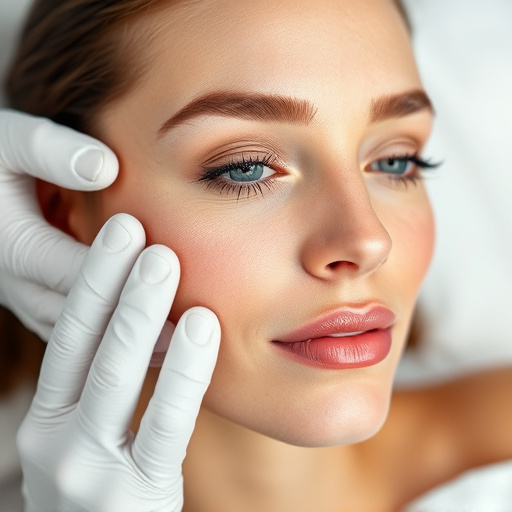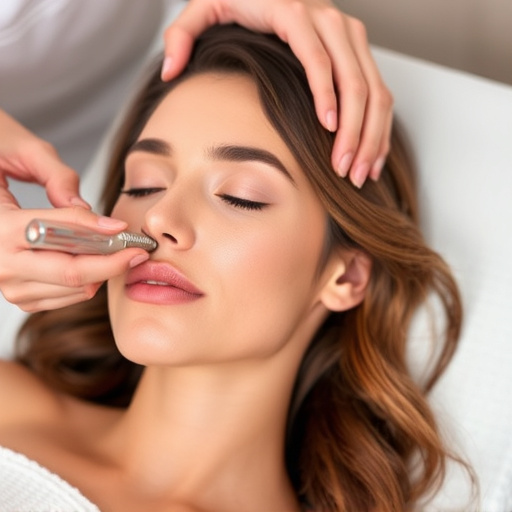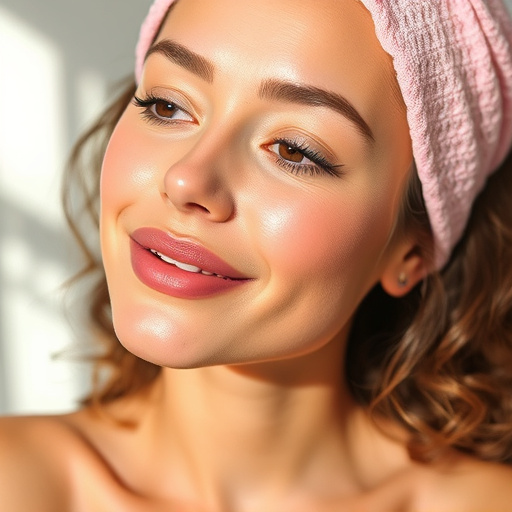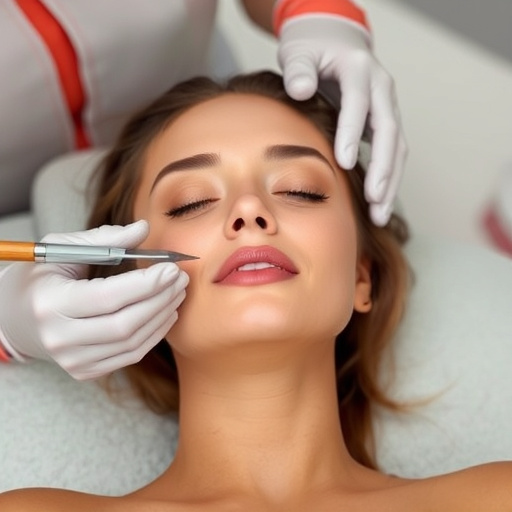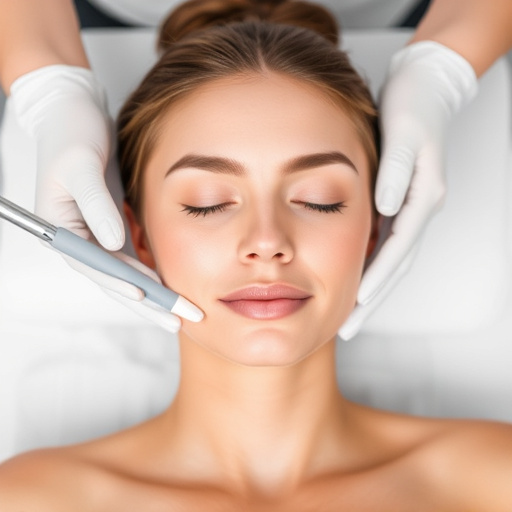Razor bumps, caused by ingrown hairs after shaving or waxing, are a common skin concern exacerbated by friction and heat. Treatment options include laser hair removal, microneedling, and skin brightening. Natural topical treatments like aloe vera, tea tree oil, or lavender reduce inflammation and discomfort. Non-surgical laser hair removal inhibits hair growth for long-lasting results. Prevention strategies include using fresh razors, shaving with the grain, exfoliating before shaving, and adopting permanent hair reduction methods. Keeping skin clean, moisturized, and avoiding irritants is crucial, and consulting a dermatologist can significantly alleviate recurrent issues.
Razor bumps, those pesky red welts that appear after shaving, can be a common and frustrating issue. Understanding what causes them is the first step towards effective treatment. This article delves into the world of razor bump treatment for underarms, exploring both topical remedies to soothe and heal existing bumps and preventive measures to reduce their recurrence. From chemical exfoliants to natural oils, discover the best practices for achieving smoother, bump-free skin.
- Understanding Razor Bumps: Causes and How They Form
- Topical Treatments for Soothing and Healing Razor Bumps
- Preventive Measures: Strategies to Reduce the Occurrence of Razor Bumps
Understanding Razor Bumps: Causes and How They Form
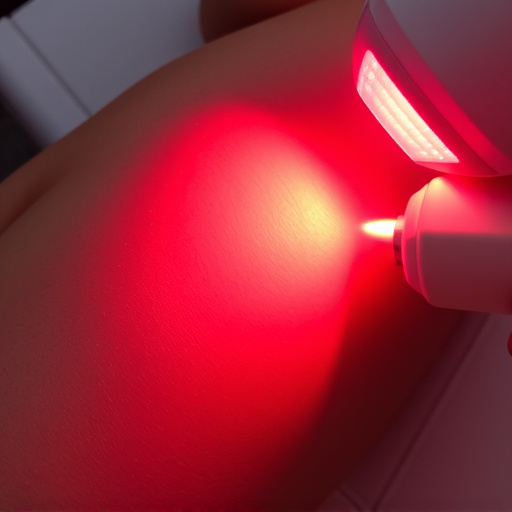
Razor bumps, also known as ingrown hairs, are a common skin issue that can be both uncomfortable and unsightly. They typically appear after shaving or waxing and are characterized by small, red, raised bumps on the underarm area. Understanding their causes is crucial for effective razor bump treatment. These bumps form when the hair, instead of growing outward, curls back into the skin, leading to inflammation and irritation. This process is often accelerated by the friction and heat generated during shaving or waxing.
Several factors contribute to the development of razor bumps. They include poor shaving techniques, using a dull razor, not preparing the skin properly before shaving, and even hormonal changes. In some cases, existing skin conditions like eczema or psoriasis can also make individuals more susceptible. Fortunately, there are various treatment options available, including laser hair removal, which targets and destroys hair follicles to prevent regrowth, and microneedling therapy, which improves skin texture and encourages new collagen production. Additionally, certain skin brightening treatments can help reduce the appearance of existing razor bumps by lightening the affected areas.
Topical Treatments for Soothing and Healing Razor Bumps
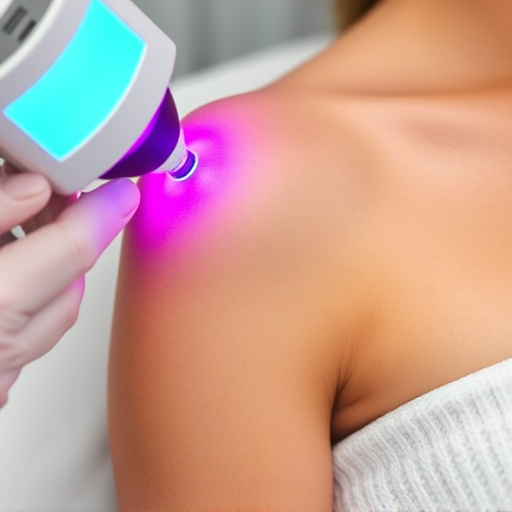
Many people turn to topical treatments as a natural way to soothe and heal razor bumps underarms. Products containing ingredients like aloe vera, tea tree oil, or lavender are popular choices due to their anti-inflammatory and antibacterial properties. These topicals can help reduce redness, itching, and discomfort associated with razor bumps, promoting healthier skin.
Additionally, non-surgical treatments like laser hair removal have gained popularity for their ability to address the root cause of razor bumps. By targeting the hair follicles, laser therapy can inhibit hair growth, reducing the likelihood of future razor bumps. While it may require several sessions, many people find that this method offers long-lasting results and improves overall skin health.
Preventive Measures: Strategies to Reduce the Occurrence of Razor Bumps
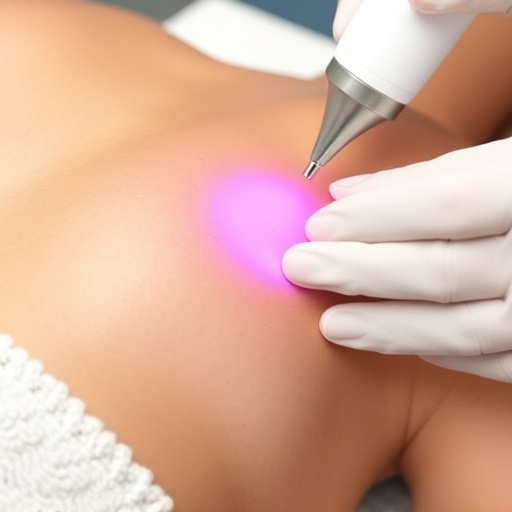
To prevent razor bumps from forming in the underarm area, several strategies can be employed. One key measure is to ensure proper shaving techniques—using a fresh razor blade, shaving in the direction of hair growth, and applying a good-quality shaving cream or gel to create a smooth glide. Exfoliating the skin before shaving can also help remove dead skin cells and prevent hair from trapping beneath the surface.
Additionally, adopting aesthetic treatments like laser hair removal or electrolysis can offer long-lasting solutions by reducing hair regrowth. Keeping the underarm area clean and moisturized with suitable products is essential, as is avoiding tight clothing that could irritate the skin. For those dealing with recurrent issues, consulting a dermatologist may be beneficial to explore specialized acne treatments tailored to address razor bump concerns effectively.
In conclusion, effectively managing razor bumps underarms involves a multi-faceted approach. By understanding their causes, exploring suitable topical treatments, and implementing preventive measures, you can significantly reduce their occurrence and enjoy smoother skin. Remember, consistent care and the right products are key to achieving clear, bump-free underarms. For personalized advice, consult a dermatologist, and always opt for gentle, soothing ingredients when choosing razor bump treatment options.
